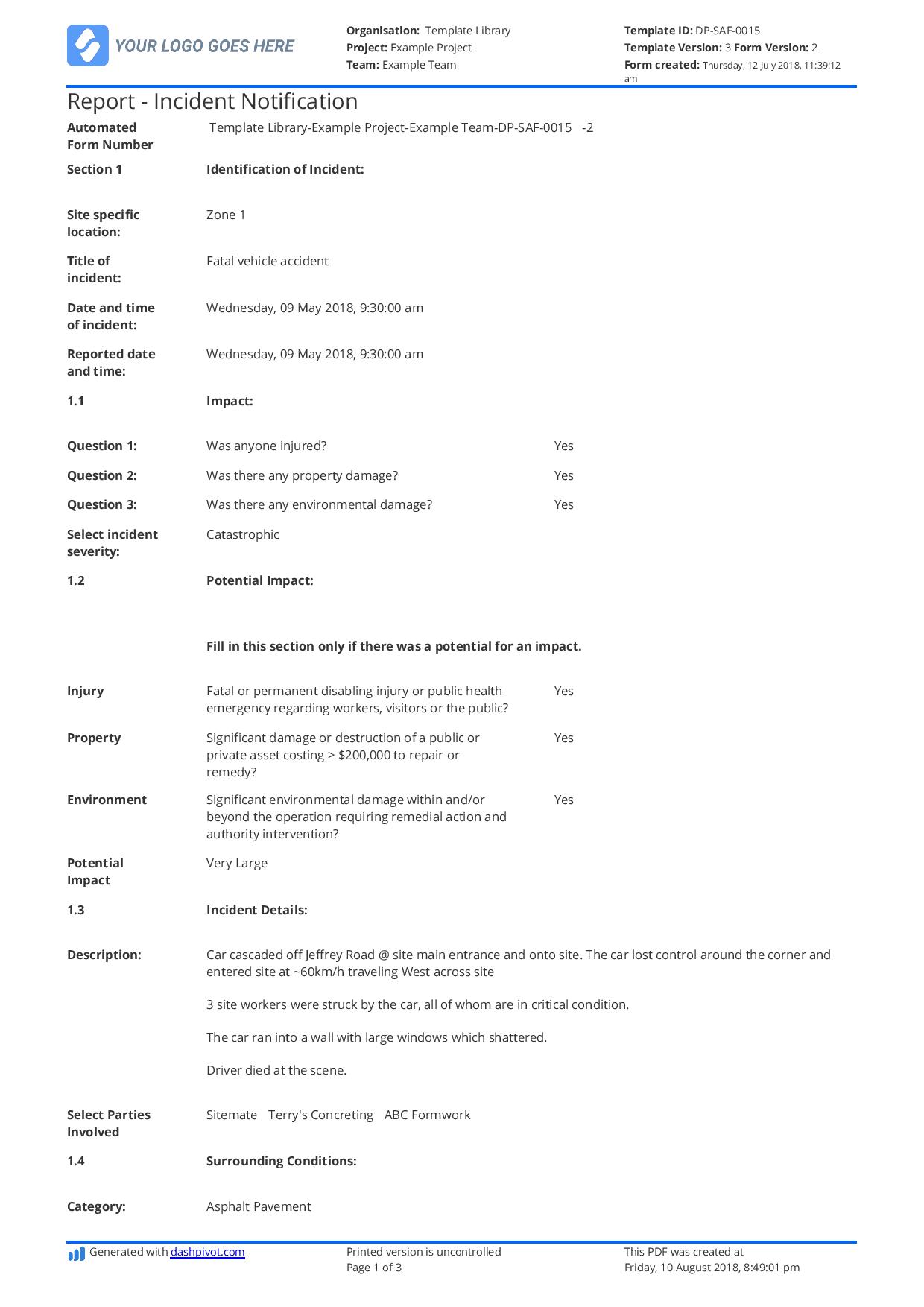How To Report Compliance Issues Template Assisted Living Facilites Flowchart
Why is your safety incident reporting process important?
Safety is a disquisitional part of successful construction and industrial project direction, and at the heart of safety management is reducing the number and severity of incidents occurring on your sites. If you lot tin reduce the number of incidents, and then you lot can keep your people, assets and projects safe.
Simply unfortunately, the overarching goal of safety and incident direction is an incommunicable one. No thing how difficult you work or how smart your company is, you are inevitably going to encounter some incidents.
Considering of the inherent nature of incidents in the industries, as a part of overall safety management, companies must have reliable processes in place to improve how incidents are reported, managed and actioned or investigated.
In terms of reactive measures (things which accept identify after an incident or later on-the-fact), incident reporting is the beginning end in the chain or sequence of incident events.
Your incident reporting procedure is focused around quickly notifying the necessary people when an incident occurs, reporting that incident with sufficient information, and so being able to store and organise safe incident reports in a way which makes them accessible and actionable should an incident need to exist farther investigated or analysed.
How yous create and manage your incident reporting procedure tin can have lasting furnishings on your safety efforts.
A poor safety incident reporting procedure results in:
- Slow response times to incidents
- Litigation issues which arise from incident disputes
- Conformance issues associated with poor incident record keeping
- An disability to larn from past mistakes and better safety over time
- More than safety incidents, more than injuries, more delayed projects etc.
For all of these reasons and more, your safety incident reporting procedure is really important to your projects and your business.And while information technology can oftentimes become an afterthought in the world of delivering projects, safe incident reporting is one of those things that tin can become a huge asset over fourth dimension when it's washed correct.
Why is your incident reporting procedure flow chart or workflow important too?
Flow charts and incident reporting workflows are disquisitional to the success of your process. As with all things in life, information technology'due south important to make people responsible and accountable for sure pieces of work.
A safety incident reporting flow chart or workflow will state and illustrate who is responsible for every office of the incident reporting procedure. The first slice of the catamenia chart may be random in that it tin be any site level person or anyone on a team who can study an incident. Merely from here, the process should get clearer. If 'X' team or 'Y' person reports an incident, then a specific person must look over, admit, escalate or escalate the incident to some other person or party who is responsible for investigating the issue further etc. etc.
By not setting upward flow charts and workflows, you are leaving your incident reporting procedure to adventure and letting it 'happen' randomly.
When you do this, safety reporting breaks down. Someone on site initiates a safety incident report and escalates it to someone else on the team who is busy and it gets buried.
By setting upwardly ready flow charts and workflows, you lot tin avoid this confusion and lack of accountability by ensuring that sure people are responsible for certain parts of the reporting framework.
At a high level, these workflows are the backbone of your procedure - along with the documents and mediums in which you choose to transfer the information.
An incident reporting process example
As previously mentioned, the start and most critical part of rubber reporting and incident reporting is that the incident gets reported.
The onus for this office of the procedure is on site level personnel, as they are the people seeing, hearing and experiencing the incidents. If they don't study an incident, then the incident volition probably go unnoticed or ignored - or worse, upshot in a worse incident because nix was done to rectify the outcome.
Although this is a site level result, it's critical that management and companies set there people up for reporting success and do everything in their power to make it easy and encouraged.
There are notwithstanding some cultural issues with incident reporting in construction and other industries, and grooming sessions, toolbox talks and other safe session and lessons help to interruption down these cultural bug and encourage a culture of safety.
And there as well some logistical changes which companies tin can adapt and change in their procedures to better incident reporting rates and frequencies which I will affect on later on including making incident reports quick and easy to fill up out and fast to ship or escalate up the chain of command.
Below you will run across an incident notification form which is an instance of how an incident report procedure begins.
A person witnesses a safety incident on site and completes an incident notification or incident study form. This form contains important information about the who, what, where and when of the incident - which is all important information for the person who must read and translate the form besides every bit for safety conformance and compliance.

How To Report Compliance Issues Template Assisted Living Facilites Flowchart,
Source: https://sitemate.com/au/resources/articles/safety/incident-reporting-procedure-example/
Posted by: lopezfrompont1970.blogspot.com


0 Response to "How To Report Compliance Issues Template Assisted Living Facilites Flowchart"
Post a Comment